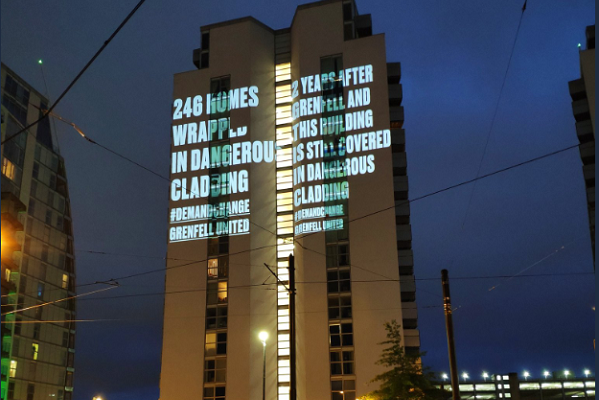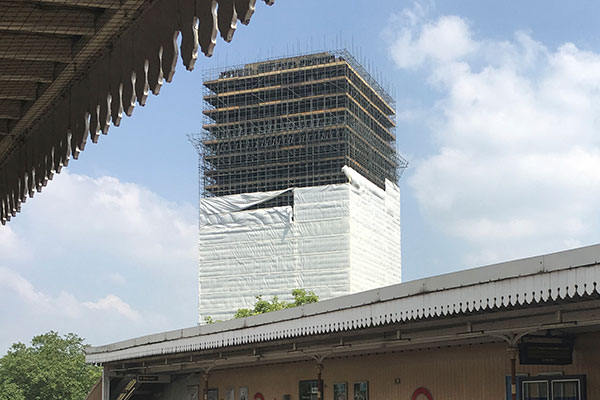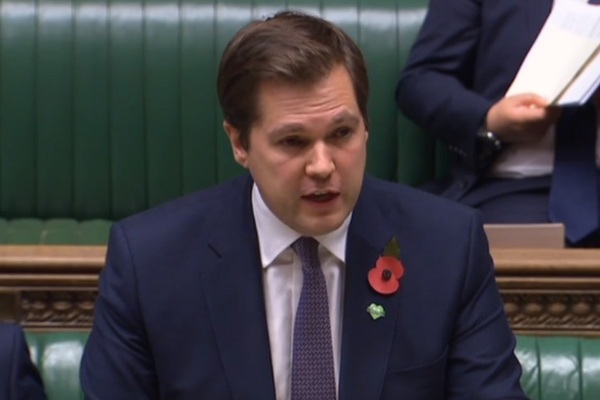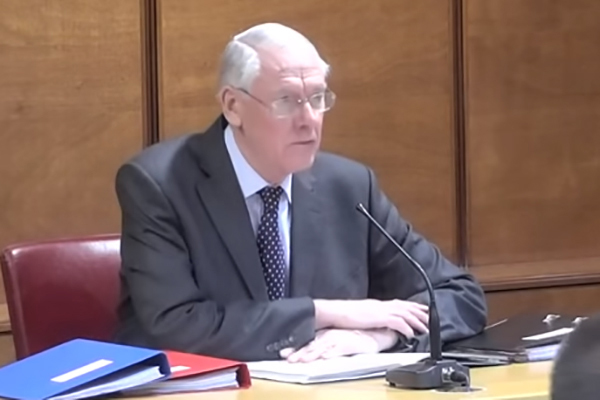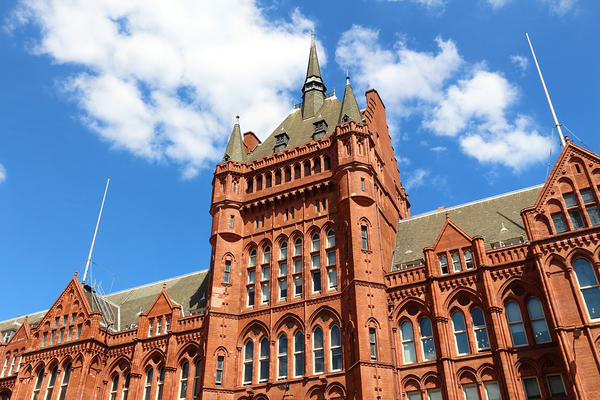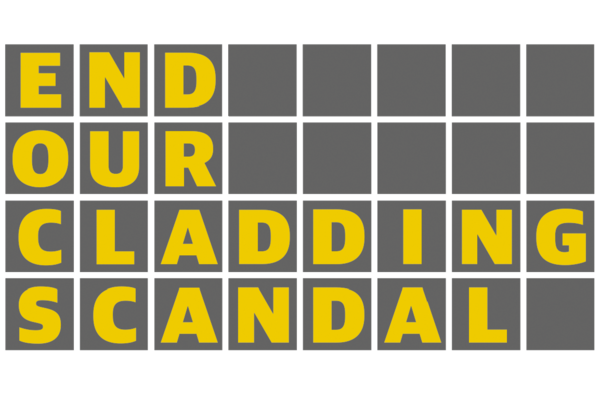You are viewing 1 of your 1 free articles
Buildings with Grenfell-style cladding may still be unsafe to occupy despite government reassurance, says inquiry expert
Hundreds of buildings around the country with Grenfell-style cladding may be unsafe to occupy despite reassurances given by government, an expert witness to the Grenfell Inquiry has said.
Dr Barbara Lane delivered a withering assessment of the government’s response to other buildings clad with aluminium composite material (ACM), criticising it for a “starting position” that the buildings are safe to occupy.
The latest government figures show since Grenfell 433 high rises have been discovered around the country with similarly dangerous ACM systems. Of these, just 114 have completed remediation works – leaving 321 with dangerous systems in place across the social housing and private sector.
In her report on the inquiry’s interim recommendations, she said: “My primary concern, currently, is that the starting position by [the Ministry for Housing, Communities and Local Government (MHCLG)] appears to be that the high-rise buildings with unsafe ACM cladding remain safe to occupy. Not the opposite.
“I am unclear how this position has been derived and validated by the MHCLG.”
She said the work to assess whether or not the buildings were safe “has been delegated to individual local authorities to determine, but I can ascertain no minimum safety standard requirement”.
Currently, buildings clad with ACM are required to switch to an evacuation policy, which usually requires the use of a ‘waking watch’ to raise the alarm if there is a fire.
In a fire in a block in Manchester this year, the watch failed to alert all of the residents of the need to evacuate.
Dr Lane added that there has also been no evidence to demonstrate that fire services have the necessary equipment and strategies to evacuate or fight a fire in an ACM-clad building – with particular regard to the presence of vulnerable residents who would struggle to evacuate themselves.
“Clarity on all the issues above would result in a subset of buildings that may in fact be unsafe to occupy at this time by some, or potentially all, types of residents,” she added.
She said the issue required “prioritisation at a national scale” to direct resources to fixing the most at risk buildings – work which she said “will take years to plan and deliver”.
“This time frame is very significant. Because it means the risk to life is therefore not short term, how are the current mitigation measures considered fit for purpose in this longer timescale?” she said.
“Again, this will impact what buildings can be categorised as safe to occupy, over this period. I cannot find such clarity in the evidence provided from the MCHLG.”
The government has provided £400m to pay for cladding removal in the social housing sector and £200m to cover costs in the private sector.
Dr Lane called on Sir Martin Moore-Bick, the judge leading the inquiry, to recommend the development of a standardised method for calculating the risk to life, nationally led prioritisation of the work and the publication of minimum mitigation measures for the interim.
Sir Martin elected not to make recommendations on these points but did call for the remediation work to be completed “as vigorously as possible”.
In a letter obtained by Inside Housing in May, Sir Martin signalled that he would limit his recommendations to issues relating to the specific evidence called in phase one – despite calls from the experts for “urgent and very far-reaching reform”.
But the letter added: “The fact that the chairman does not consider it appropriate to make any particular recommendation at this stage should not be taken as an indication that he does not regard the matter as important or that he will not make a recommendation in due course.”
Elsewhere in Dr Lane’s report, she called for significant changes to the testing and certification of materials in light of evidence about the cladding system installed at Grenfell Tower.
She said a certificate published by the British Board of Agrément (BBA) in 2008, which said Arconic’s ACM cladding met the standard of ‘Class 0’, contained “a startling series of omissions” regarding further test data carried out during the nine years it was in operation.
As a result, she called for a recommendation that certificates should no longer be published “without all the test data upon which they rely – pass and fail data – being made fully available”.
The BBA does not carry out tests itself and is currently reliant on manufacturers to provide this data.
She also criticised the ‘large-scale testing’ regime – calling for a “moratorium” on new data from BS 8414 tests and a new test which better reflects real world buildings.
Among the expert reports submitted to Sir Martin, there was wide support for a move away from blanket ‘stay put’ to a position where plans are available to evacuate a building if necessary. This recommendation was adopted by the report.
However, fire safety consultant Colin Todd said such a change was unnecessary.
“In my opinion, very little evidence has come to light thus far to suggest the need for urgent, immediate recommendations by the chairman of the public qnquiry. Accordingly, I strongly recommend that any interim recommendations that are made be kept to a minimum,” he said.
“In particular, I do not consider it appropriate, at this stage, for recommendations to be made in relation to policy, guidance or standards, or in relation to the stay put strategy that continues to be adopted in relation to new purpose-built blocks of flats.”
Mr Todd was the principal author of a 2011 guidance document published by the Local Government Association, which advised reliance on the stay put strategy. He declared this to the inquiry and in his report.
Dr Lane advised additional research on the required widths of staircases to support an evacuation.
While this is frequently cited as a reason why evacuation would be impossible, she said there was “no evidence” that the stair widths at Grenfell Tower would have made the stairway impossible during an all-out evacuation.
She described the current regulatory regime on stay put as “not fit for purpose”.
Grenfell Tower Inquiry: full coverage
Evacuation plans should be developed for all high-rise buildings, says Grenfell Inquiry judge
Sir Martin calls for landlords to develop evacuation policies on all high-rise buildings as well as recommending an “urgent” inspection of fire doors in all properties.
Click here to read the full story
Grenfell Tower Inquiry: the recommendations
A full list of Sir Martin’s 17 recommendations, including calls for building owners to install facilities to give evacuation signals to tenants and cladding removal work to be completed “as vigorously as possible”.
Click here to read the full story
Grenfell Inquiry: ACM cladding was ‘primary cause of fire spread’ and tower did not comply with regulations, judge rules
The judge leading the Grenfell Tower Inquiry has ruled that the cladding installed on the tower did not comply with building regulations, finding that the polyethylene-cored panels were the “primary cause” of the rapid spread of flames.
Click here to read the full story
Grenfell Inquiry: round-up of Sir Martin Moore-Bick’s phase one conclusions
How the fire started, why the fire spread, what was the response from the fire brigade, emergency services and Kensington and Chelsea Tenant Management Organisation, all covered in our round-up of the Sir Martin’s conclusions.
Click here to read the full story
Grenfell Inquiry report: stay put ‘an article of faith’ within LFB
The inquiry judge criticises the London Fire Brigade’s “reluctance to believe that a building wouldn’t comply with building regulations” and claims that many lives would have been saved if the incident commander told residents to evacuate earlier.
Click here to read the full story
KCTMO chief criticised for ‘passive role’ and ‘ineffective leadership’ on night of Grenfell fire
Former chief executive of the Kensington and Chelsea Tenant Management Organisation was labelled as “essentially detached” from events on the night of the fire by Sir Martin. The company was also criticised for not passing on crucial resident information to the fire brigade.
Click here to read the full story
Grenfell Inquiry: ACM cladding was ‘primary cause of fire spread’ and tower did not comply with regulations
Despite saying that he would try not to deal with the make-up of the building in his phase one report, Sir Martin decided to make an early finding that the building breached headline regulation. He also ruled that the building suffered “total failure of compartmentation”.
Click here to read the full story
Grenfell Inquiry reaction: survivors call for implementation timeline for recommendations
Survivors group Grenfell United calls for fire service bosses to “face consequences” for failings leading up to the fire, while the London Fire Brigade, National Housing Federation and Royal Borough of Kensington and Chelsea also respond
Click here to read the full story
Recommendation rejected by Pickles as ‘disproportionate’ in 2013 repeated in Grenfell Tower Inquiry
Story reveals that as communities secretary Eric Pickles was given a recommendation after the Lakanal House Fire to ensure all high-rises “provide relevant information on or near premises” but branded a move to implement “unnecessary and disproportionate”
Click here to read the full story
Grenfell judge calls for Johnson to implement Grenfell Inquiry recommendations ‘without delay’
Grenfell judge calls for Johnson to implement Grenfell Inquiry recommendations ‘without delay’ In a letter to prime minister Boris Johnson before the inquiry was published, report author, Sir Martin Moore-Bick, calls on PM to implement inquiry recommendations “without delay”.
Click here to read the full story
Government to implement Grenfell Inquiry recommendations ‘in full’ and provide funding
Robert Jenrick, housing secretary, promises to bring in all of Sir Martin’s recommendations “without delay” and also guarantees government will pay for changes.
Click here to read the full story
Government to implement Grenfell Inquiry recommendations in full
Ministers will implement recommendations put forward in the Grenfell Tower Inquiry’s first report “in full” and “without delay”, housing secretary Robert Jenrick has confirmed.
Click here to read the full story
Stay Put: where did it come from and where do we go next?
“Stay put had become an article of faith and to depart from it was unthinkable.” These are the words of Grenfell Inquiry judge Sir Martin Moore-Bick. Peter Apps looks at where the idea came from and where we go now.
Click here to read the full story
Is your approach to fire safety reliant on faith in the system or good judgement?
The Grenfell Tower Inquiry report suggests that housing providers and the fire service have not been willing enough to plan for worst-case scenario fires in high-rise buildings. Martin Hilditch outlines how the inquiry’s report should guide thinking and practice
End Our Cladding Scandal: campaign aims
- Government provides a fund to cover the cost of cladding removal and remedial works on private blocks
- A firm timescale is set out of no more than two years for the work to be carried out
- Residents are reimbursed for the interim fire safety costs incurred, and funding is to be provided for necessary internal fire safety measures identified by a competent fire risk assessor
